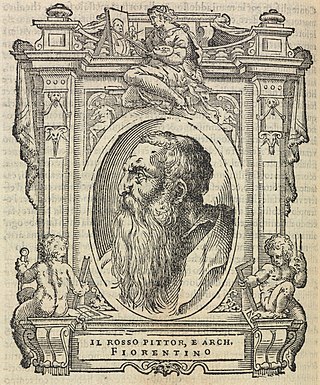
Giovanni Battista di Jacopo, known as Rosso Fiorentino, or Il Rosso, was an Italian Mannerist painter who worked in oil and fresco and belonged to the Florentine school.

The Baronci Altarpiece was a painting by the Italian High Renaissance artist Raphael. His first recorded commission, it was made for Andrea Baronci's chapel in the church of Sant'Agostino in Città di Castello, near Urbino. The altarpiece was seriously damaged during an earthquake in 1789, and since 1849 fragments of the original painting have been part of different collections.
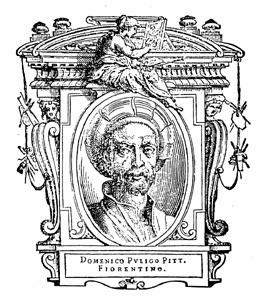
Domenico Puligo (1492–1527) was an Italian painter of the Renaissance, active in Florence. His real name was Domenico di Bartolomeo Ubaldini.
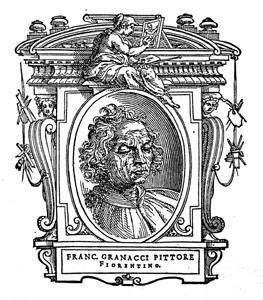
Francesco Granacci was an Italian Renaissance painter active primarily in his native Florence. Though little-known today, he was regarded in his time and is featured in Giorgio Vasari's Lives of the Artists.

The Master of the Osservanza Triptych, also known as the Osservanza Master and as the Master of Osservanza, is the name given to an Italian painter of the Sienese School active about 1430 to 1450.

The Marriage of the Virgin is the subject in Christian art depicting the marriage of the Virgin Mary and Saint Joseph. The wedding ceremony is not mentioned in the canonical Gospels but is covered in several apocryphal sources and in later redactions, notably the 14th-century compilation the Golden Legend. Unlike many other scenes in Life of the Virgin cycles, it is not a feast in the church calendar, though it sometimes has been in the past.

Andrea del Sarto was an Italian painter from Florence, whose career flourished during the High Renaissance and early Mannerism. He was known as an outstanding fresco decorator, painter of altar-pieces, portraitist, draughtsman, and colorist. Although highly regarded during his lifetime as an artist senza errori, his renown was eclipsed after his death by that of his contemporaries Leonardo da Vinci, Michelangelo, and Raphael.

The Ancient Royal and Eminent Basilica Collegiate of Our Lady of the Alms, better known as Basilica della Colleggiata, is a church in Catania, Sicily, southern Italy. Finished in 1794, it is an example of Sicilian Baroque.
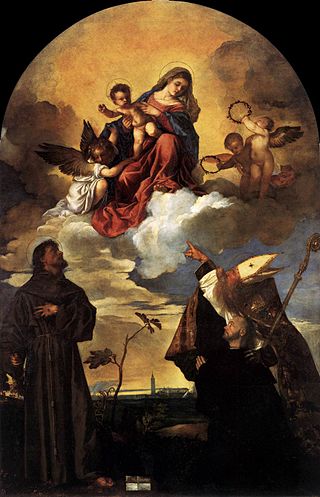
The Gozzi Altarpiece is an oil painting by the Italian Renaissance master Titian, dating from 1520. It is located in the Pinacoteca civica Francesco Podesti in Ancona, central Italy.

The San Giobbe Altarpiece is a c. 1487 oil painting by the Italian Renaissance master Giovanni Bellini. Inspired by a plague outbreak in 1485, this sacra conversazione painting is unique in that it was designed in situ with the surrounding architecture of the church, and was one of the largest sacra conversazione paintings at the time. Although it was originally located in the Church of San Giobbe, Venice, it is now housed in the Gallerie dell'Accademia in Venice after having been stolen by Napoleon Bonaparte.
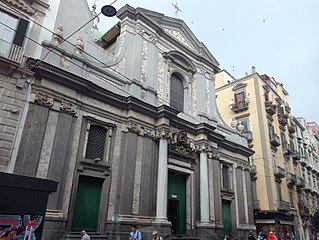
The church of St. Nicholas the Charitable is a church located on via Toledo, almost midway between Piazza Carità and Piazza Dante in Naples, Italy.

The church of Santa Maria delle Grazie in Brescia is located on at the west end of Via Elia Capriolo, where it intersects with the Via delle Grazie. Built in the 16th century and remodeled in the 17th century, it still retains much of its artwork by major regional artists, including one of its three canvases by Moretto. The other two are now held at the Pinacoteca Tosio Martinengo. The interior is richly decorated in Baroque fashion. Adjacent to the church is the Sanctuary of Santa Maria delle Grazie, a neo-gothic work.
Meo di Pero, also called Meo di Piero was an Italian painter active in Siena in a Gothic style. He worked in the studio of Cristoforo di Bindoccio. All the latter paintings are generally co-attributed to Meo, since no independent work is known.

The Prague Altarpiece of Lucas Cranach the Elder portrays the Virgin Mary and female saints was, at the time it was made, the second most important altarpiece in St Vitus Cathedral. The altarpiece was most probably brought to Prague as a commission by Emperor Maximilian I. The reason for this could have been the betrothal of his granddaughter Mary to Louis II of Hungary, the engagement of Ferdinand I and Anna Jagiellon (1515) or the coronation of Mary of Habsburg as Queen of Bohemia (1522). A hundred years later, in 1619, the altarpiece fell victim to Calvinist iconoclasm. The figures of the female saints were cut out of it and its central part was destroyed.
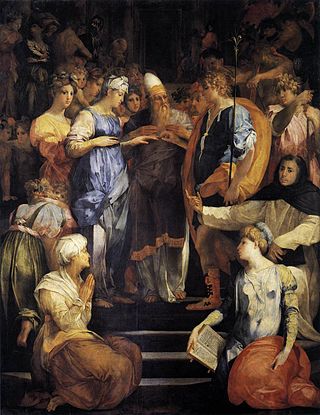
Marriage of the Virgin or the Ginori Altarpiece is a 1523 oil on panel painting by Rosso Fiorentino, signed and dated by the artist. It was commissioned by Carlo Ginori for the chapel dedicated to the Virgin Mary and Saint Joseph - previously owned by the Masi family that chapel had been acquired by the Ginori family in 1520. It still hangs in the Basilica, whilst a drawn copy attributed to Antonio Circignani is now in the Louvre (n.1592).

Assumption of the Virgin is a fresco by Rosso Fiorentino in the Chiostro dei Voti of the Basilica della Santissima Annunziata in Florence.

Madonna and Child with Cherubs or The Virgin and the Child with Angels is an oil painting by the Italian Mannerist painter Rosso Fiorentino, produced sometime between 1512 and 1517. Originally on panel, it was later transferred to canvas. It was acquired in 1810 in Paris with help from the baron Dominique Vivant Denon for the Hermitage Museum in Saint Petersburg, where it now hangs.
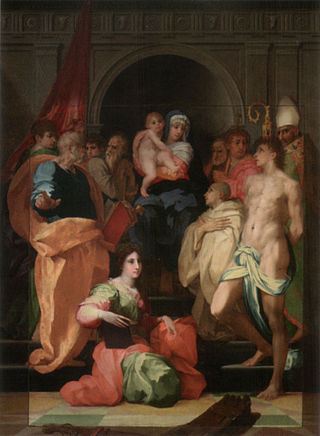
The Dei Altarpiece is an oil on panel painting by Rosso Fiorentino, commissioned in 1509 by the Dei family and completed in 1522. It is now in Florence's Galleria Palatina, whilst the Uffizi holds a preparatory drawing which may be the original idea for the work.

Cherub Playing a Lute or Musical Cherub is a 1521 oil on panel painting by Rosso Fiorentino, now in the Uffizi in Florence. It is signed "Rubeus Florentinus" and dated - though the date is unclear it probably reads 1521.

Coronation of the Virgin is an oil-on-canvas painting executed c. 1539 by the Italian Renaissance painter Domenico Beccafumi, now in the Pinacoteca nazionale in Siena.























